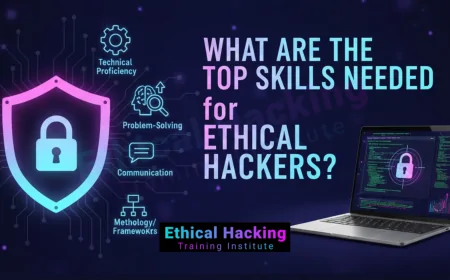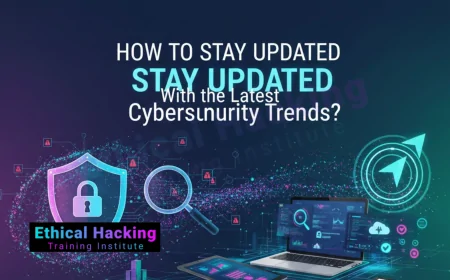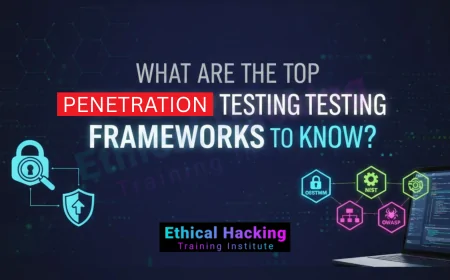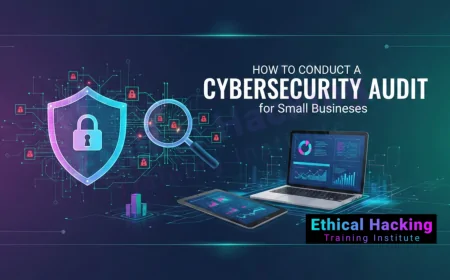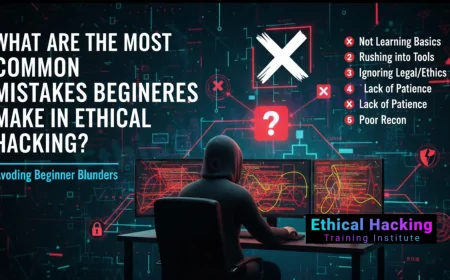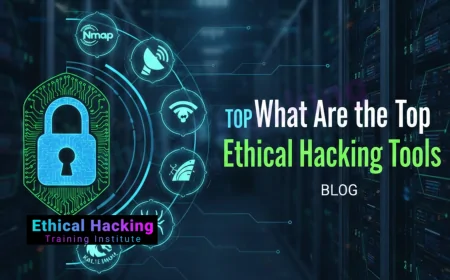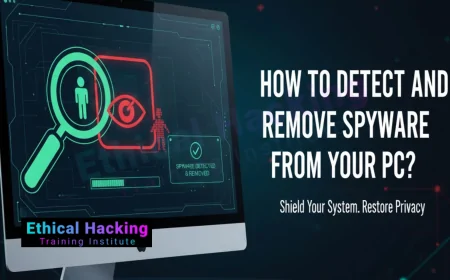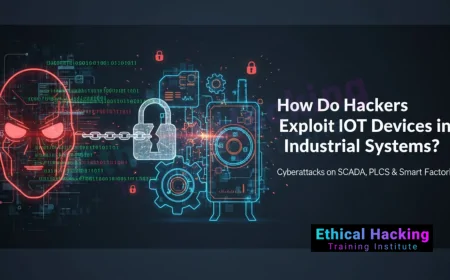Hacking and Cyber Security Course: Protect Your Business from Cyber Threats | Corporate Cyber Security Training: Ethical Hacking to Protect Your Enterprise
Enroll in a hacking and cybersecurity course to protect your business from cyber threats. Learn penetration testing, risk management, and compliance strategies.
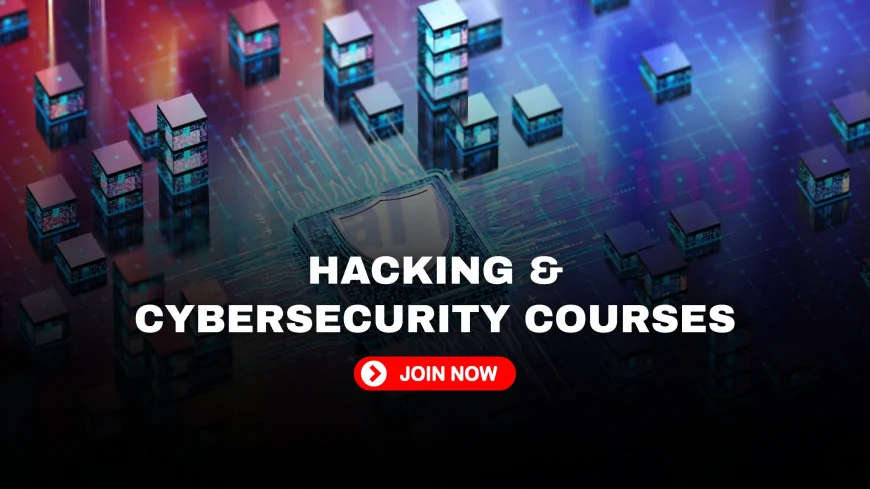
Table of Contents
- Introduction
- Why Cybersecurity Training Matters for Businesses
- Course Structure & Core Modules
- Essential Tools & Platforms
- Hands‑On Labs & Certifications
- Business Benefits & Compliance
- Implementing Training in Your Organization
- Advanced Modules & Emerging Technologies
- Career Paths & Upskilling Employees
- FAQs
- Conclusion
Introduction
In today’s digital economy, businesses face escalating cyber threats ranging from ransomware and phishing to sophisticated AI-driven attacks. A structured “Hacking and Cyber Security Course” equips businesses with the knowledge and tools to protect systems, data, and reputation. This guide outlines course content, practical labs, compliance benefits, implementation strategies, and career pathways for corporate professionals.
Why Cybersecurity Training Matters for Businesses
Well‑structured cybersecurity training creates the first line of defense:
- Boosts awareness: Employees become alert to threats like phishing and malware :contentReference[oaicite:6]{index=6}.
- Reduces risk & cost: Prevents costly breaches—the average attack costs businesses $4–9 M :contentReference[oaicite:7]{index=7}.
- Ensures continuity: Minimizes downtime by quickly identifying and mitigating threats :contentReference[oaicite:8]{index=8}.
- Regulatory compliance: Meets standards like GDPR, HIPAA, and NIST via documentation and training :contentReference[oaicite:9]{index=9}.
- Customer trust: A secure posture boosts confidence and strengthens brand reputation :contentReference[oaicite:10]{index=10}.
Course Structure & Core Modules
A comprehensive business-oriented cybersecurity course typically includes:
- Threat Landscape & Risk Assessment – understanding modern threats, threat intelligence
- Network & Perimeter Security – firewalls, segmentation, VPNs
- Web & Application Security – OWASP Top 10, penetration testing, secure coding
- System & Endpoint Protection – malware defense, patch management
- Incident Response & Forensics – detection, triage, and remediation
- Cloud, IoT, & Mobile Security – securing hybrid environments
- Security Awareness Training – phishing simulations, behavioral change
Essential Tools & Platforms
- Nmap, Wireshark – for scanning and packet analysis
- Metasploit, Burp Suite – for penetration testing
- Security Information & Event Management (SIEM) systems – for logging and alerts
- Phishing simulation platforms – to test employee readiness
- Cyber insurance integration – aligning training with insurer requirements :contentReference[oaicite:11]{index=11}
Hands‑On Labs & Certifications
Effective programs include:
- Practical labs: Attack simulations, red-team v blue-team exercises
- CTFs and real-world exercises to sharpen skills
- Certifications: CEH, CompTIA Security+, CISSP, OSCP – all recognized across enterprise and SMB sectors
Business Benefits & Compliance
For businesses, cybersecurity training yields:
- Regulatory alignment: SOPs, incident logs, audit readiness :contentReference[oaicite:12]{index=12}
- Risk reduction: Lower breach costs and insurance premiums :contentReference[oaicite:13]{index=13}
- Reputation: Trust from clients and partners
- Employee empowerment: Motivated staff confident in responding to threats :contentReference[oaicite:14]{index=14}
Implementing Training in Your Organization
- Assess roles & needs (executive, technical, general staff)
- Select formats – live workshops, on-demand modules
- Integrate with existing IT policies and cyber insurance
- Measure effectiveness – phishing test rates, incident response
- Maintain momentum with annual refreshers and updates
Advanced Modules & Emerging Technologies
- AI & ML Security: Detecting AI-powered threats
- Zero Trust & SASE: Transitional security paradigms
- Cloud-native security: Container and serverless hardening
- OT/ICS: Industrial system protection
Career Paths & Upskilling Employees
Investing in a structured hacking and cybersecurity course doesn’t just protect your business—it also opens powerful career development pathways for employees. As organizations face increasingly complex threats, having in-house security talent is a competitive advantage. By upskilling team members through hands-on training and certification, businesses can build a resilient, security-aware workforce while reducing dependence on external consultants.
Common Career Tracks After Cybersecurity Training
- Security Analyst: Monitors networks and systems for threats, often the first responder to incidents.
- Penetration Tester (Ethical Hacker): Simulates cyberattacks to discover system vulnerabilities before criminals do.
- SOC Analyst: Works in a Security Operations Center, focusing on real-time threat detection and response.
- Cybersecurity Engineer: Builds and maintains secure IT architectures and networks.
- Compliance & Risk Officer: Ensures regulatory frameworks (like GDPR, HIPAA, or ISO 27001) are followed.
- Incident Responder: Leads investigation and remediation efforts after breaches or attacks.
- CISO (Chief Information Security Officer): Executive-level role that shapes security strategy across the organization.
Upskilling Non-Technical Employees
Even non-technical staff—from HR to Finance—play a critical role in organizational cybersecurity. Through awareness training, phishing simulations, and role-based learning, they can:
- Recognize social engineering and phishing attacks
- Handle sensitive data in compliance with privacy regulations
- Collaborate with IT during incident response scenarios
Benefits of Internal Upskilling
- Employee Retention: Upskilled employees are more likely to stay with organizations that invest in their growth.
- Productivity: Security-conscious employees prevent mistakes that could lead to breaches.
- Cost Efficiency: Reduces outsourcing costs and builds internal cyber resilience.
- Culture Shift: Fosters a proactive, security-first mindset across departments.
By creating clear pathways from awareness to expert roles and encouraging continuous learning, businesses turn cybersecurity into a core strength—not just an IT responsibility.
FAQs
1. What is a business-focused hacking course?
It's a cybersecurity training program designed to protect systems and data in corporate environments, combining offensive and defensive skills.
2. Who should attend?
Everyone from executives to IT staff—even non-technical employees for awareness training.
3. Is hands-on lab required?
Yes—practical labs like CTFs and simulated attacks build real-world defenses.
4. How does training reduce cyber insurance costs?
Insurers often offer discounts to businesses with documented employee training programs :contentReference[oaicite:15]{index=15}.
5. Is this training compliant with GDPR or HIPAA?
Yes—training aligns with frameworks like NIST, ISO, GDPR, HIPAA as demonstrated by policy and incident logs.
6. How often should training be updated?
At least annually, or whenever major threats or technologies emerge.
7. Does my business need cyber insurance?
Recommended—it complements training and provides financial remediation in case of breaches :contentReference[oaicite:16]{index=16}.
8. Can small businesses afford this?
Yes—many SMBs use online platforms or shared training budgets to reduce cost.
9. What budget is required?
Costs vary: from ₹50,000 online modules to ₹300,000+ for executive and IT advanced training.
10. Is executive training different?
Yes—executive programs focus on governance, risk, and strategic threat management :contentReference[oaicite:17]{index=17}.
11. Do employees get certified?
Yes—certifications like CEH, CompTIA Security+ are included in many programs.
12. How do I measure training effectiveness?
Use phishing simulations, incident drill results, and reduction in reported incidents.
13. Is cloud security covered?
Yes—cloud architecture and container security are key modules.
14. What about IoT and remote work?
Covered under emerging threat modules for IoT and remote endpoint protections.
15. Will my staff resist?
Not if training is relevant, engaging, and aligned with their roles.
16. Can non-tech staff participate?
Absolutely—tailored awareness modules exist for non-IT teams.
17. How long is the full course?
Typically 4–8 weeks part-time, or accelerated bootcamps of 2–3 weeks.
18. Are these programs internationally valid?
Yes—certifications like CEH and ISO compliance are globally recognized.
19. How to choose a provider?
Look for accredited trainers, lab access, measurable outcomes, and insider reviews.
20. Is it worth it?
Yes—prevention, compliance, risk management, and brand protection far outweigh the investment.
Conclusion
Properly designed hacking and cybersecurity training is essential not just for corporate defense—it’s also a driver of customer trust, regulatory compliance, and employee empowerment. With hands-on labs, executive workshops, and up-to-date modules, businesses can mature their security posture and prepare for evolving cyber threats. Investing in education now prevents breaches, reduces costs, and reinforces organizational resilience.
What's Your Reaction?
 Like
0
Like
0
 Dislike
0
Dislike
0
 Love
0
Love
0
 Funny
0
Funny
0
 Angry
0
Angry
0
 Sad
0
Sad
0
 Wow
0
Wow
0
